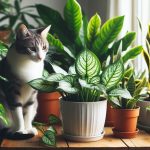Zinnias are beloved for their vibrant colors and easy maintenance, making them a popular choice for many gardens. However, pet owners may wonder, “Are zinnias toxic to cats?”. It’s important for cat owners to be aware of the potential dangers that zinnias can pose to their feline friends. In this blog post, we’ll explore the characteristics of zinnias, popular varieties. The potential risks of zinnia toxicity in cats. We’ll also discuss the signs of zinnia toxicity, steps to take if ingestion occurs, safe alternatives for cat-friendly gardens. Preventive measures to safeguard our furry companions.

Zinnias and Their Characteristics
Zinnias are colorful and vibrant annual flowers that are commonly found in gardens and floral arrangements. These flowers are known for their resilience, variety of colors, and ability to attract butterflies, making them a popular choice for many gardeners. Here are some key characteristics of zinnias:
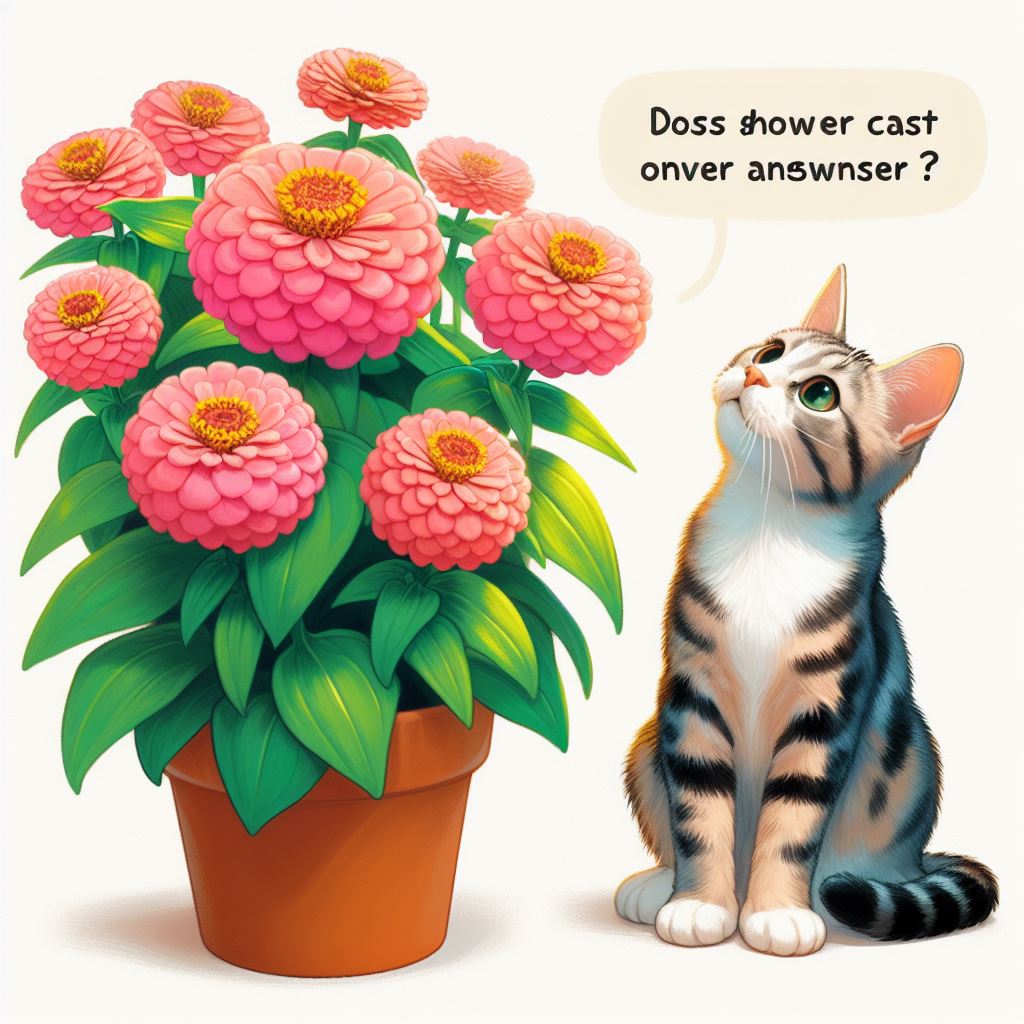
- Variety: Zinnias come in a wide range of colors, including pink, red, orange, yellow, and purple, offering a diverse selection for gardeners to choose from.
- Size: They vary in size, with some zinnia varieties producing small, dainty flowers, while others can have larger, showier blooms.
- Growth Habit: Zinnias can grow in a variety of shapes and forms, from single-stemmed to bushy. This makes them suitable for different garden designs and landscaping needs.
- Low Maintenance: Zinnias are relatively easy to grow and maintain, making them a popular choice for novice and experienced gardeners alike.
- Seasonal Blooms: These flowers typically bloom from early summer to the first frost, providing a long-lasting display of color in the garden.
It’s important to note that while zinnias are prized for their ornamental qualities, they can pose potential risks to cats if ingested. As we delve deeper into the topic of “zinnias toxic to cats,” it’s crucial for cat owners to be aware of the potential dangers and take necessary precautions to ensure the safety of their feline companions.
Popular Varieties of Zinnias
Zinnias come in various beautiful varieties, each with its unique features and characteristics. While they are a delightful addition to any garden. It’s essential for cat owners to be conscious of the potential risks associated with these flowers. Here are some popular zinnia varieties to be aware of:
Zinnia Elegans: This is the most common type, known for its vibrant and large blooms. It comes in a wide array of colors, making it a popular choice for many gardeners.
Zinnia Angustifolia: These zinnias are more compact and are often used as border plants or in pots. They have smaller flowers and are available in various shades of orange, yellow, red, and white.
Zinnia Haageana: Also known as Mexican zinnia, this variety is well-liked for its drought tolerance and its ability to attract butterflies to the garden. It features smaller, daisy-like flowers in hues of yellow, orange, and red.
Zinnia Peruviana: With its bushy growth habit, this variety produces flowers in shades of bright yellow and orange. It’s a favorite for adding a pop of color to the garden.
When choosing zinnias for your garden, it’s crucial to consider the safety of your feline friends. While these flowers may add visual appeal to your outdoor space, it’s important to be mindful of the potential dangers they pose to cats.
Potential Dangers of Zinnias to Cats
Zinnias, although beautiful and vibrant, can pose potential dangers to cats, especially when ingested. As a cat owner, it’s crucial to be aware of the following risks associated with zinnias toxic to cats:
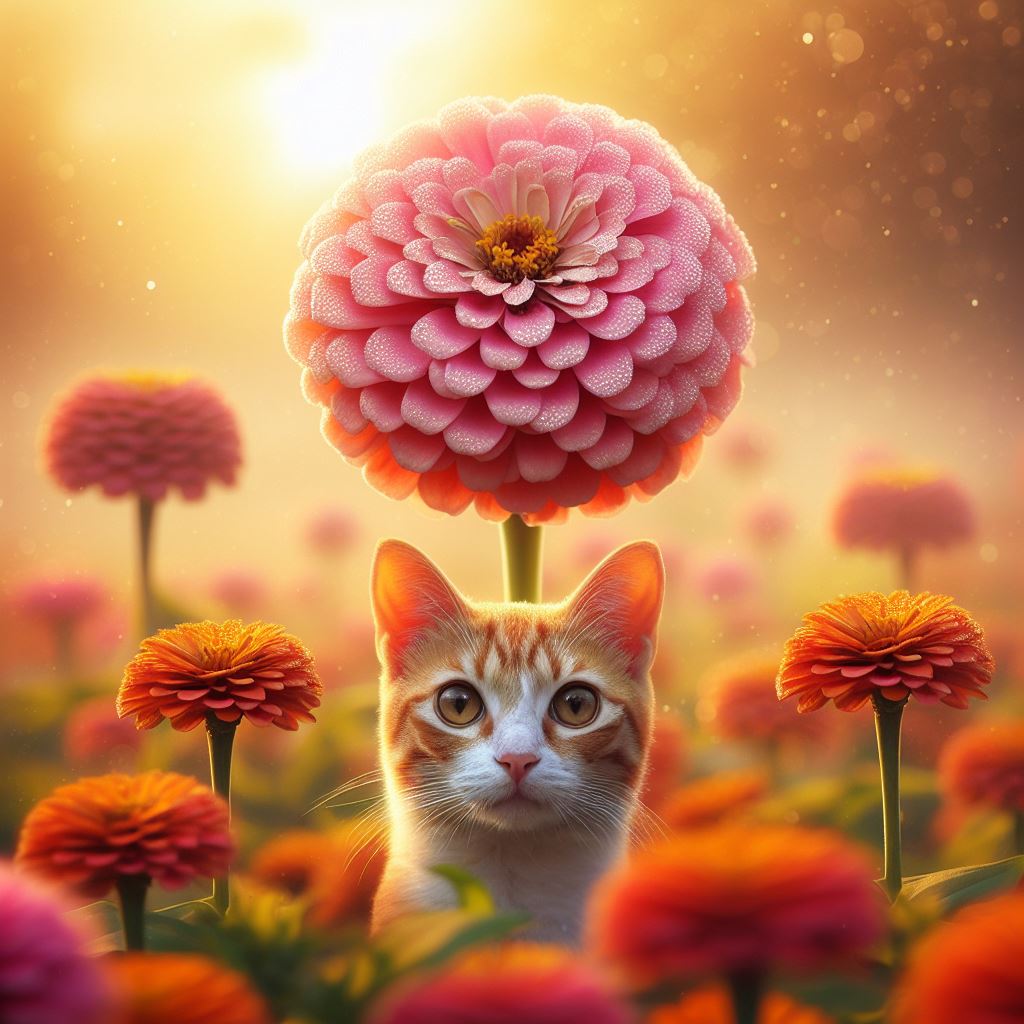
Toxic Compounds: Zinnias contain compounds that can be harmful to cats if consumed. These compounds can lead to various symptoms of toxicity, affecting the gastrointestinal system and overall well-being of the feline.
Digestive Distress: When cats ingest zinnias, they may experience symptoms such as vomiting, diarrhea, and drooling. These signs of discomfort can indicate ingestion of toxic elements present in the zinnia plant.
Potential Allergic Reactions: Some cats may exhibit allergic reactions upon exposure to zinnias, leading to skin irritation, itchiness, or inflammation. This can be particularly distressing for cats with sensitive immune systems.
Severity of Symptoms: The severity of zinnia toxicity in cats can vary based on the amount ingested and the individual cat’s sensitivity. In severe cases, ingestion of zinnias toxic to cats can lead to more serious health issues requiring immediate veterinary attention.
It’s essential for cat owners to recognize the potential dangers zinnias pose to their feline companions and take proactive measures to prevent exposure.
By understanding the risks associated with zinnias and their potential toxicity to cats, pet owners can ensure a safe and healthy environment for their beloved pets.
Signs of Zinnia Toxicity in Cats
When a curious feline comes across zinnias, it’s important for cat owners to be aware of the potential signs of zinnia toxicity to promptly address any issues. Here are some key indicators that may suggest zinnia ingestion has adversely affected a cat:
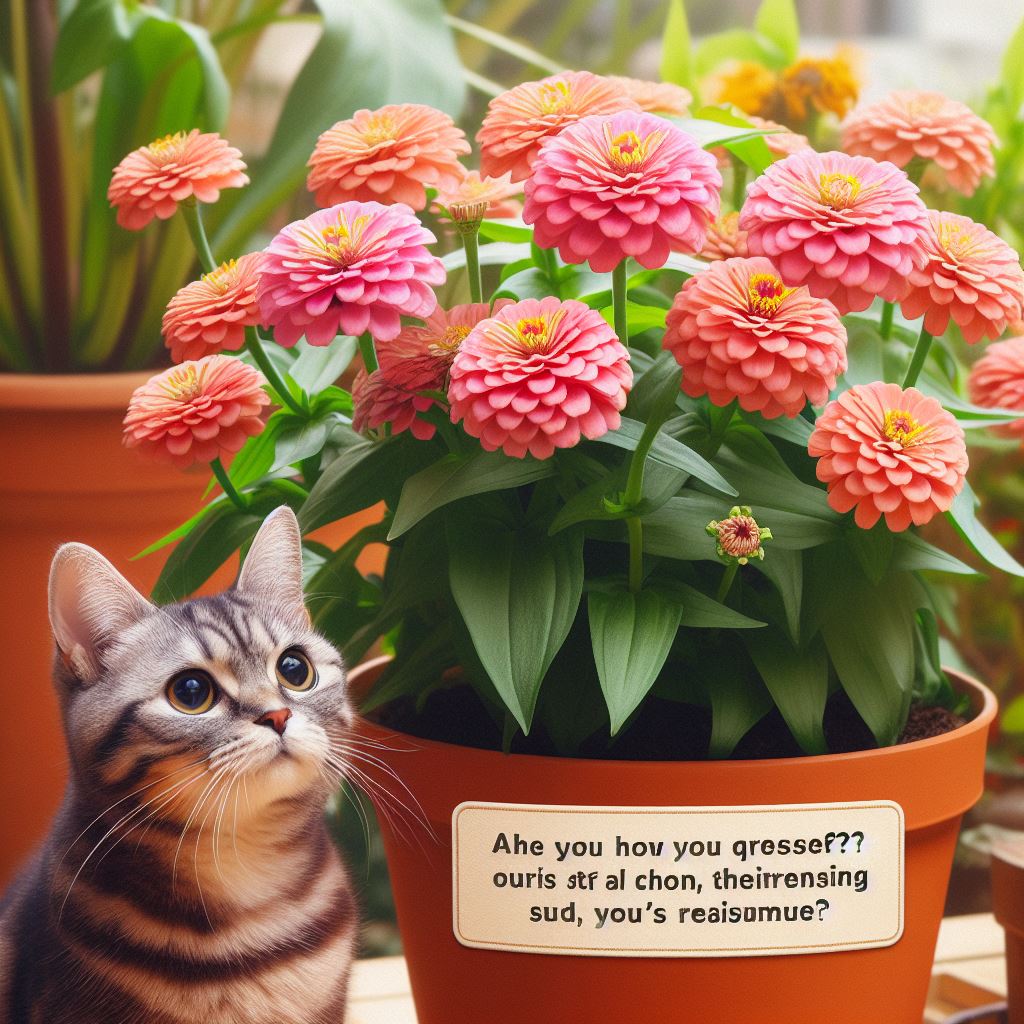
- Gastrointestinal Distress: Cats may experience symptoms such as vomiting, diarrhea, or lack of appetite after ingesting zinnias.
- Dermatological Reactions: Skin irritation or allergic dermatitis could manifest if a cat comes into contact with zinnias, particularly if they rub against the plants.
- Lethargy and Weakness: If a cat seems unusually lethargic or displays weakness after being around zinnias, it could be an indication of toxicity.
- Difficulty Breathing: In severe cases of zinnia toxicity, cats may exhibit difficulty breathing, which warrants immediate veterinary attention.
It’s crucial to stay attentive to any unusual behavior or symptoms in cats, especially if they’ve had access to zinnias. Careful observation and swift action can make a significant difference in ensuring a cat’s well-being. If any of these signs of zinnia toxicity in cats are observed, seeking veterinary assistance without delay is highly advisable.
Being familiar with these indications can assist cat owners in swiftly recognizing and addressing zinnia-related concerns, minimizing potential harm to their beloved pets.
What to Do If Your Cat Ingests Zinnias
If you suspect or know that your cat has ingested zinnias. It’s crucial to take prompt action to ensure their safety and well-being. Here’s what you should do:
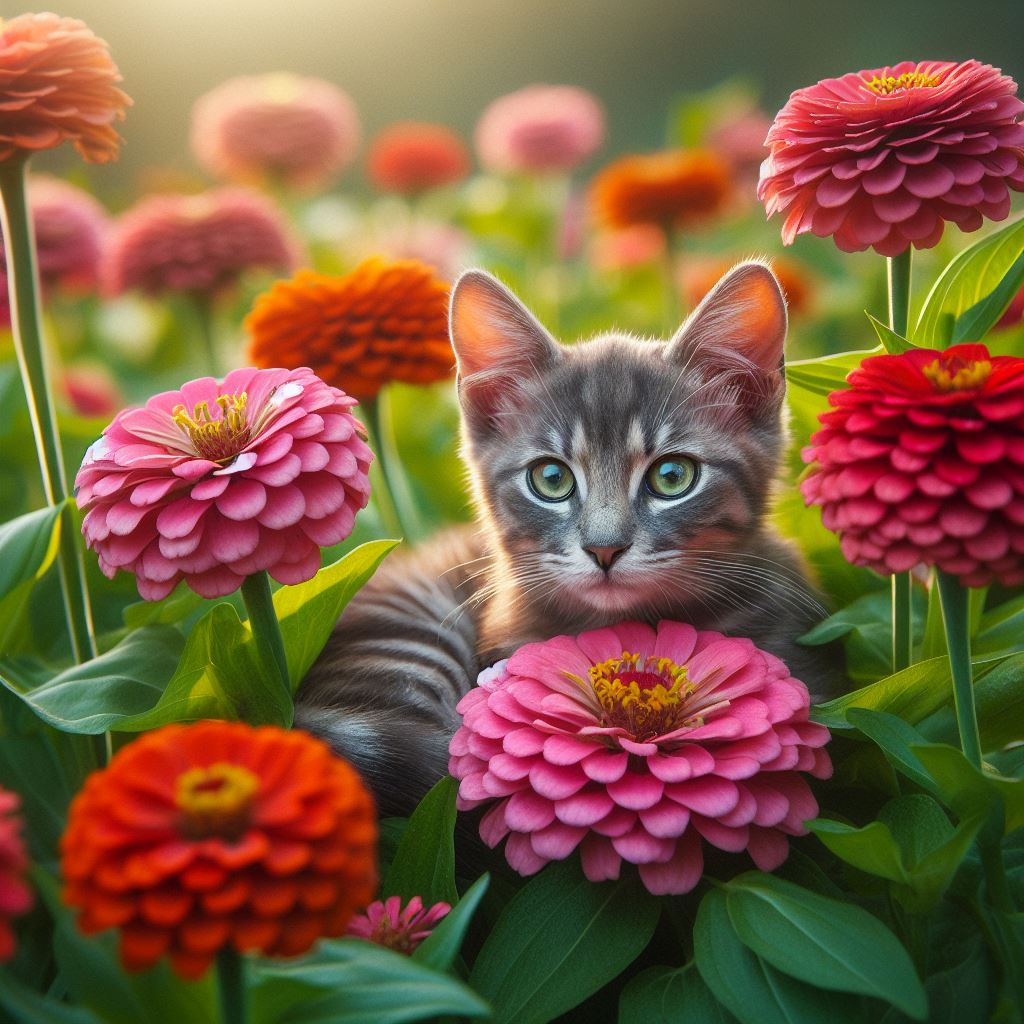
Assess the Situation:
- If you catch your cat in the act or find evidence of zinnia ingestion, remain calm and gather as much information as possible about the quantity and parts of the plant consumed.
Contact Your Veterinarian:
- Immediately get in touch with your veterinarian or the nearest animal poison control center. Provide them with details about your cat’s symptoms, the type of zinnia ingested, and the time of ingestion.
Observe Your Cat:
- Keep a close eye on your cat for any signs of zinnia toxicity such as vomiting, diarrhea, lethargy, lack of appetite, or changes in behavior.
Follow Medical Advice:
- Based on the severity of the situation, your veterinarian may recommend bringing your cat in for examination and treatment. Follow their instructions diligently.
Prevent Future Exposure:
- Safeguard your living space by removing zinnias or any other potentially harmful plants that are toxic to cats. Opt for cat-friendly greenery instead.
Remember, swift action and professional guidance are essential in handling zinnia ingestion in cats. Prioritize your cat’s well-being by seeking the appropriate care without delay.
Safe Alternatives to Zinnias for Cat Owners
When it comes to ensuring the safety and well-being of our feline friends. It’s crucial to be mindful of the plants we have in our surroundings. If you’re a cat owner who wants to enjoy the beauty of flowers without risking your pet’s health, consider opting for safe alternatives to zinnias. Here are some cat-friendly options to consider:
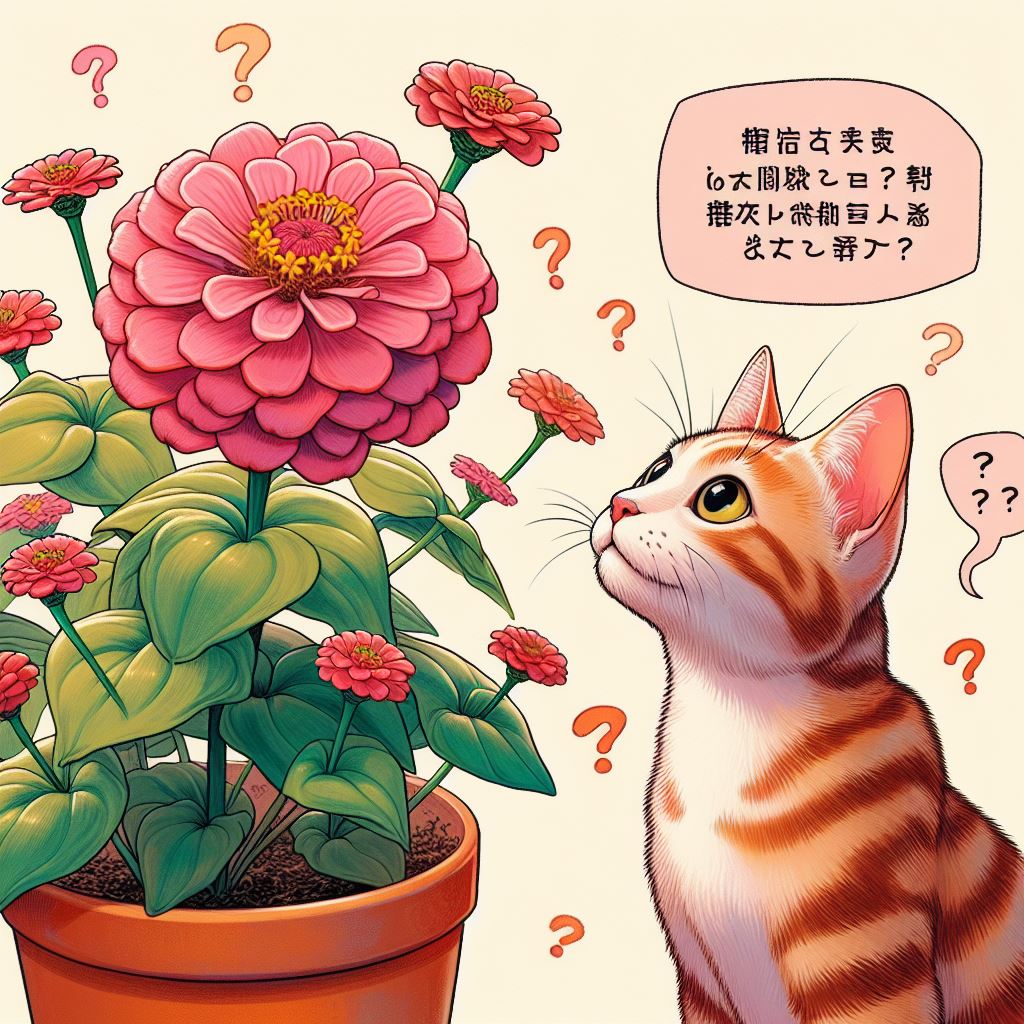
Safe Flower Alternatives:
- Roses: These classic blooms are non-toxic to cats, allowing you to add elegance to your space without posing a threat to your furry companions.
- Snapdragons: Known for their vibrant colors and unique shape, snapdragons are a safe choice for cat owners looking to add variety to their garden.
- African Violets: These delicate flowers add a charming touch to any environment and are safe for cats, giving you peace of mind.
- Bamboo: Not only an aesthetically pleasing addition to your home, but also a non-toxic option for cat owners seeking greenery.
Safe Plant Alternatives:
- Spider Plant: With its air-purifying properties and non-toxic nature, the spider plant is an excellent choice for cat-friendly households.
- Boston Fern: This lush, low-maintenance plant is safe for cats and can bring a refreshing ambiance to your living space.
- Areca Palm: Adding a touch of tropical flair, the areca palm is a safe alternative that pet owners can confidently introduce into their homes.
When selecting flowers and plants for your home, it’s always best to prioritize the safety of your pets. By opting for these safe alternatives, you can create a beautiful and cat-friendly environment where both you and your furry friends can thrive without worry about “zinnias toxic to cats”.
Preventive Measures to Protect Cats from Zinnia Exposure
When it comes to safeguarding your furry friends from potential harm, taking preventive measures is crucial. Here are some practical steps you can take to protect your cats from zinnia exposure:
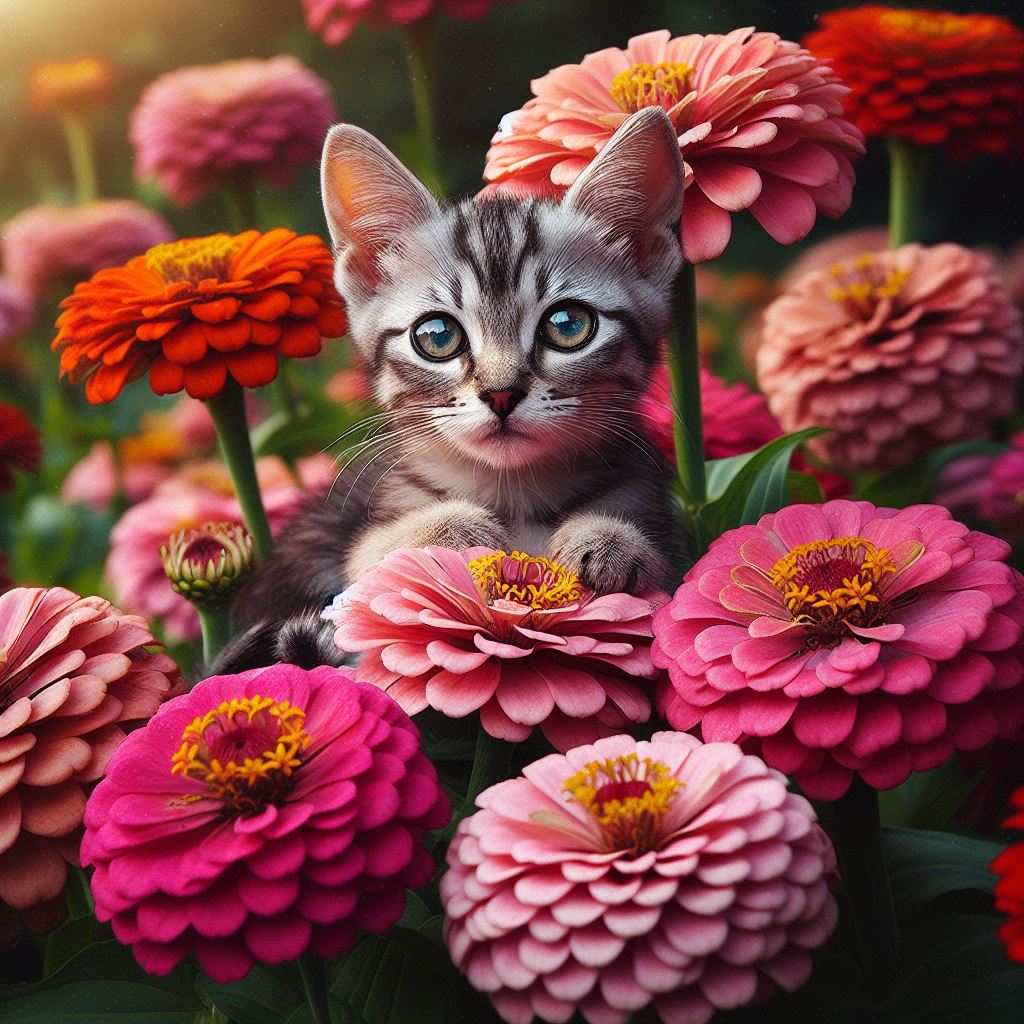
Indoor Planting: Consider cultivating zinnias indoors, where your cats are less likely to have access to them. This simple step can help create a safe environment for your pets.
Designated Pet Area: Create a designated pet area within your home and avoid placing zinnias or any other potentially harmful plants in this space. This provides a controlled environment for your cats to roam without encountering toxic flora.
Supervision and Training: If you choose to grow zinnias outdoors, consider supervising your cats when they are in the garden. Additionally, training your cats to avoid certain areas or plants can be an effective preventive measure.
Barriers or Enclosures: Install barriers or enclosures around your zinnia garden to prevent your cats from reaching the plants. This physical barrier can act as a deterrent and reduce the risk of accidental ingestion.
Education and Awareness: Familiarize yourself with the signs of zinnia toxicity in cats and educate other pet owners in your community. Sharing knowledge and raising awareness can help prevent accidental exposure.
By implementing these preventive measures, you can minimize the risk of zinnia exposure for your feline companions and create a safe living space for them. Remember to always prioritize your pet’s well-being and take proactive steps to ensure their safety.
Remember, being mindful of zinnias around your cats is a crucial part of responsible pet ownership.
Consulting a Veterinarian for Zinnia Related Concerns
If you suspect that your cat has ingested zinnias and is showing signs of distress, it’s crucial to seek immediate veterinary assistance. Consulting a veterinarian for zinnia related concerns is essential to ensure the well-being of your feline companion. Here’s why consulting a professional is imperative:
Expert Assessment: A veterinarian can conduct a thorough evaluation of your cat’s symptoms and overall health to determine the extent of zinnia toxicity.
Diagnostic Tests: Veterinarians can perform diagnostic tests to confirm zinnia poisoning and assess the impact on your cat’s system.
Tailored Treatment: Trusting a veterinarian ensures that your cat receives appropriate treatment tailored to their specific condition, which may include medication, supportive care, or other interventions.
Prevention of Complications: Prompt intervention by a veterinarian can help prevent potential complications associated with zinnia ingestion.
Guidance and Support: Veterinarians can offer valuable guidance on how to prevent future zinnia exposure and provide support throughout the recovery process.
Before your veterinary visit, be prepared to provide detailed information about the suspected zinnia ingestion. Including the type of zinnia, the amount ingested, and the onset of symptoms. This information will assist the veterinarian in delivering timely and effective care for your cat.
Remember, swift action and professional guidance are crucial when addressing zinnia toxicity in cats. Always prioritize your cat’s health and well-being by consulting a veterinarian when zinnia-related concerns arise.
Sharing Zinnia Safety Information with Other Pet Owners
When it comes to zinnias, it’s crucial to spread awareness about the potential risks they pose to our feline friends. Here are some essential points to share with other pet owners to ensure the safety of their cats:
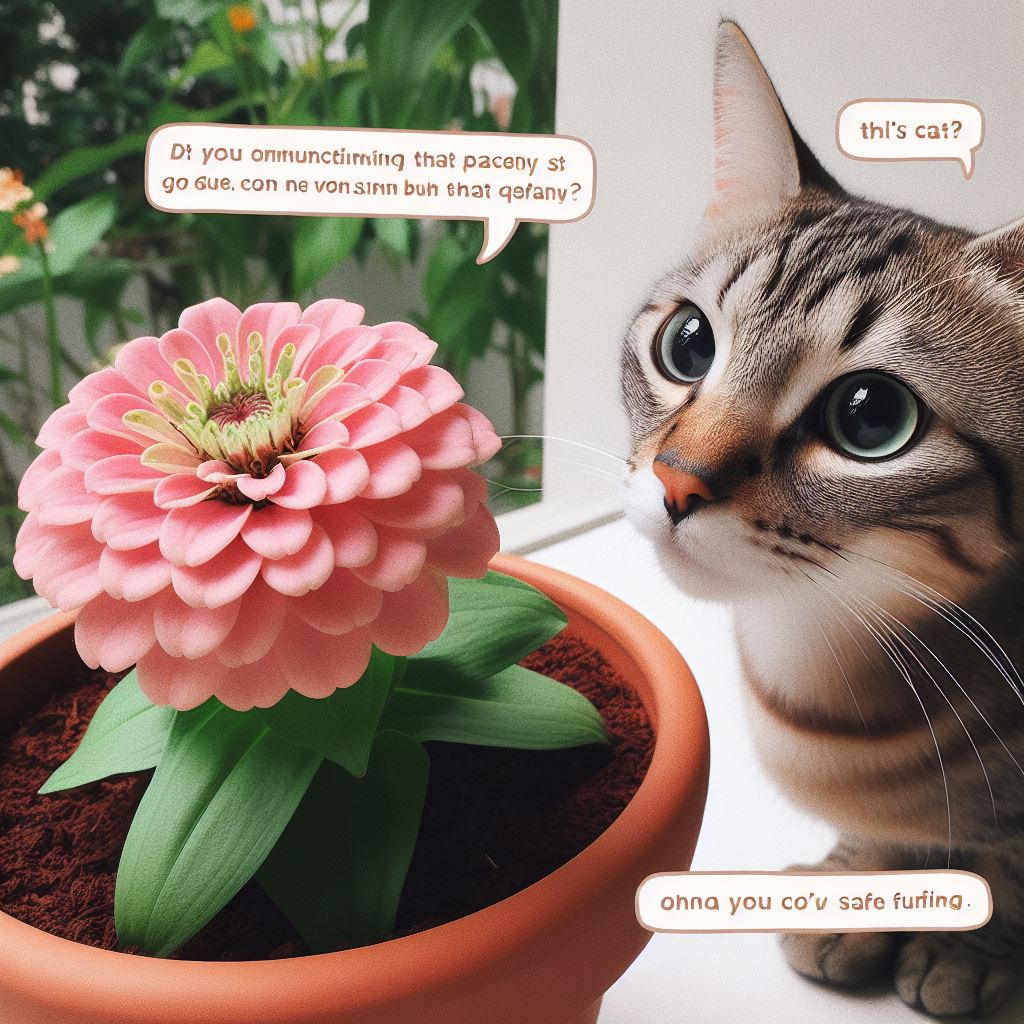
Educate about the Dangers: Inform fellow pet owners about the potential toxicity of zinnias to cats. Emphasize the importance of recognizing the signs of zinnia ingestion and promptly seeking veterinary care if their cat shows any symptoms.
Promote Safe Alternatives: Encourage the use of cat-friendly flowers and plants in households where cats are present. Highlight beautiful and non-toxic alternatives to zinnias, such as African violets, snapdragons, or rosemary.
Offer Preventive Tips: Share practical tips to prevent zinnia exposure to cats, such as placing zinnias out of reach, creating designated cat-friendly areas without zinnias, or considering alternative outdoor landscaping options.
Emphasize Veterinarian Consultation: Stress the importance of consulting a veterinarian if there are any concerns about zinnia exposure or potential toxicity. Urge pet owners not to hesitate in seeking professional help for their cat’s well-being.
By sharing this information with other pet owners, you play a crucial role in creating a safer environment for cats and raising awareness about the potential dangers of zinnias to their health.
Remember, sharing knowledge and insights about zinnia safety can significantly contribute to the well-being of beloved feline companions.
Conclusion: Being Mindful of Zinnias around Cats
In conclusion, while zinnias are beautiful and vibrant flowers that can enhance the aesthetics of any garden or home, it’s crucial for cat owners to be mindful of the potential risks they pose to their feline companions. Zinnias toxic to cats is a well-documented concern. Taking proactive measures to ensure the safety of your cats should be a top priority.
By being aware of the potential dangers and implementing preventive strategies, such as keeping zinnias out of reach or opting for cat-friendly alternatives, you can create a safer environment for your beloved pets. Additionally, sharing information about zinnias toxic to cats with other pet owners can help raise awareness and prevent potential incidents in the future.
Ultimately, while enjoying the beauty of zinnias, it’s essential to prioritize the well-being of your cats. By taking the necessary precautions and staying informed about the potential risks, you can create a harmonious and safe living space for both your zinnias and your feline companions.
Frequently Asked Questions
Are zinnias toxic to cats?
No, zinnias are non-toxic to cats. They are safe to have around cats and won’t pose a threat if ingested or touched.
Do zinnias attract cats?
Zinnias are not known to attract cats. They are generally considered to be harmless to cats and do not have any special attraction for them.
Are zinnias safe to have in a household with cats?
Yes, zinnias are safe to have in a household with cats. They can be grown indoors or outdoors without posing any risk to cats.
Can cats eat zinnias?
While zinnias are non-toxic to cats, it’s best to discourage cats from consuming any flowers or plants unless they are specifically designated as safe for feline consumption.
Do zinnias have any health benefits for cats?
Zinnias do not have any specific health benefits for cats. They are primarily ornamental flowers and are not used in any cat-specific remedies or treatments.
Zinnias and Cats: Assessing the Safety of Zinnia Flowers for Feline Companions
| Feature | Zinnia Flowers |
|---|---|
| Scientific Name | Zinnia spp. |
| Toxic to Cats? | Generally Non-Toxic |
| Toxic Components | No Known Toxic Components |
| Reaction After Contact | Generally Well Tolerated |
| Poisoning Symptoms | No Known Symptoms |
| Growing Environment | Safe Garden Plant |
| Recommendations for Pets | Should Not Be Left Unattended, Generally Safe. |
Notes and Considerations:
- Toxic Components: Zinnia flowers are generally considered non-toxic to cat health. However, since individual pets may have allergic reactions, it is advisable to contact a veterinarian if any unusual reactions occur.
- Reaction After Contact: Zinnia flowers are generally well-tolerated by pets. However, some sensitive cats may experience skin reactions. Therefore, it is important to observe your pet’s behavior after contact with the flowers.
- Growing Environment: Zinnia flowers are typically safe garden plants. However, if chemical fertilizers or harmful insecticides have been used, be aware that these substances could be harmful to your pet.
- Recommendations for Pets: It is essential to know your pet’s reactions to plants. While zinnia flowers are generally safe, caution should be exercised if your pet tends to harm flowers.
These details are provided for general information purposes, and for specific concerns about your pet’s health, it is recommended to consult with a veterinarian.
Are Fiddle Leaf Figs Toxic To Cats? Danger for Your Feline Friends
Read More Now..

